Churches in ignimbriteDuring the Byzantine Empire, many families in Cappadocia became Christian enclaves. Each founded their own monastery, which was dug out
from the relatively soft volcanic deposits. This technique was used since centuries for homes and necropolis. It turned out to be very
useful during the first incursions by Muslims from Arabia between the 8th and 10th centuries AD and, later on, during Turkish invasion.
Despite the protection by underground chambers, the last Christian communities disappeared in the 11th century AD. |
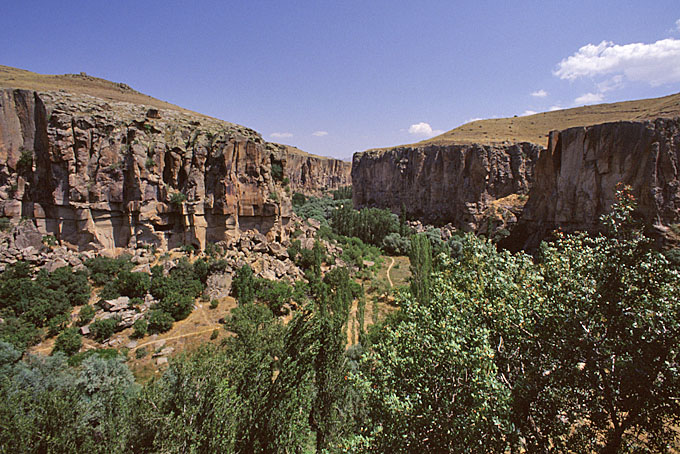 Peristrema Valley, a canyon cut by a river into ignimbrites on Hasan Dagi's North flank. | 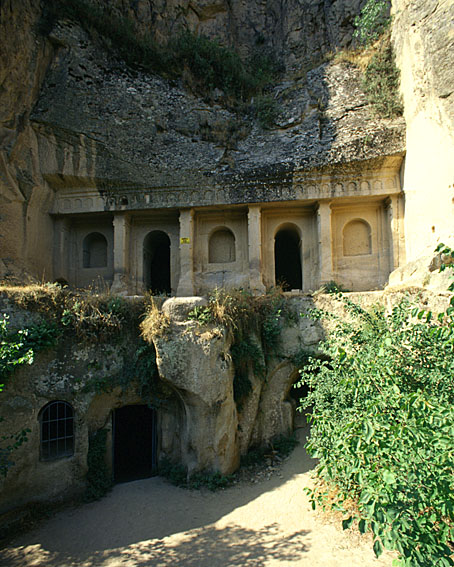 Vertical canyon cliffs were ideal places to start excavation of churches in the softish rock. | 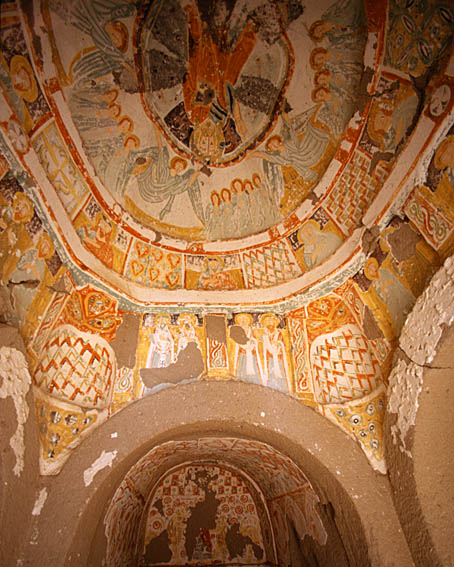 Agac Alti Kilise, the "Church below the Tree" in Peristrema Valley. | 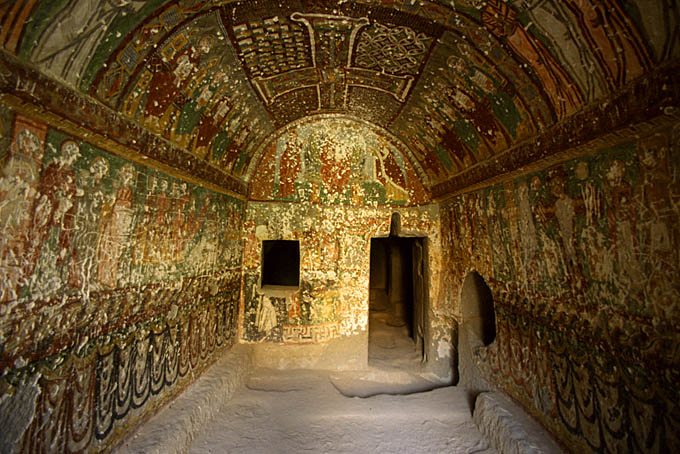 Kokar Kilise, the "Scented Church" in Peristrema Valley. |
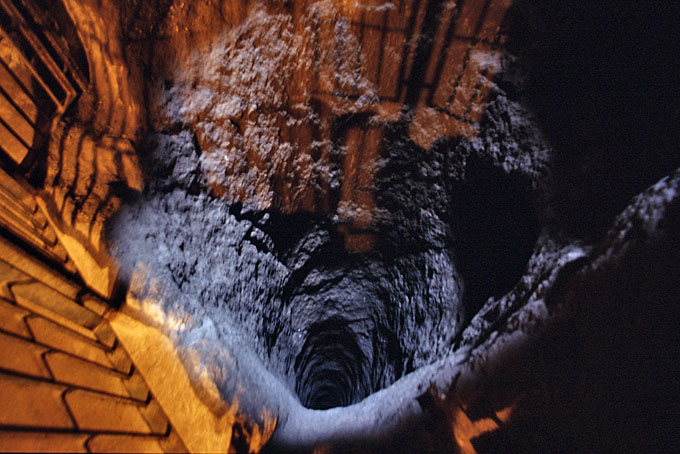 Derinkuyu, an underground town which had 12 levels during the first Arab incursions. | 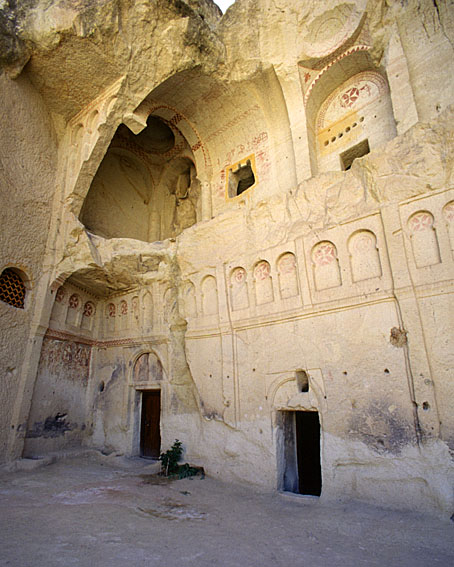 The entrance of Karanlik Kilise, the "Dark Church" in Goreme. | 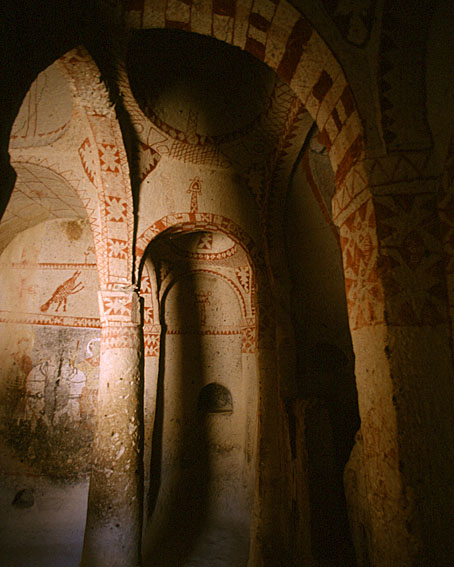 Saint Barbara Kilise, Goreme. Note the crab painted at extreme left. | 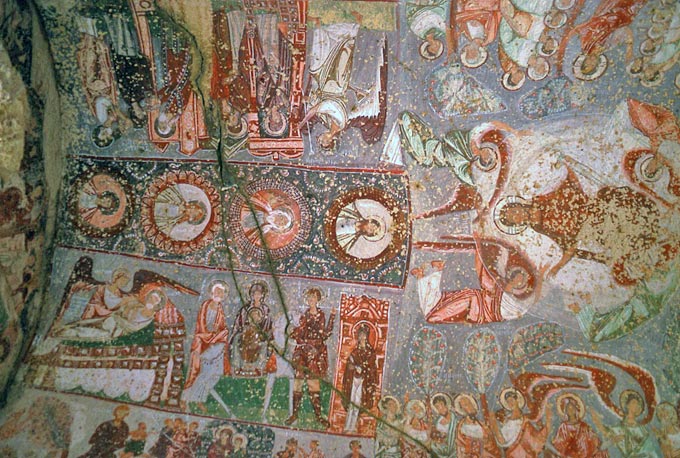 Frescoes on the ceiling of Cavus'In Kilise. |
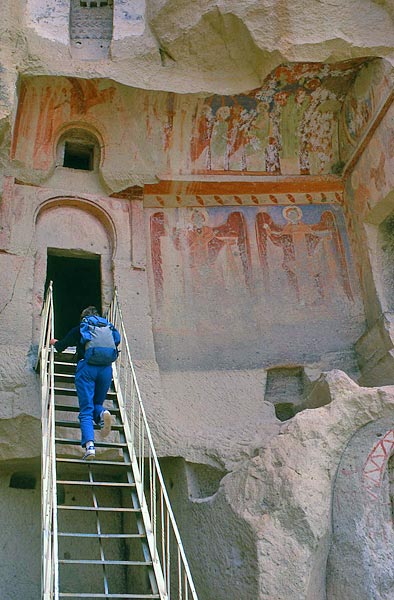 Entrance to Cavus'In Kilise, once protected by high level above the ground. | 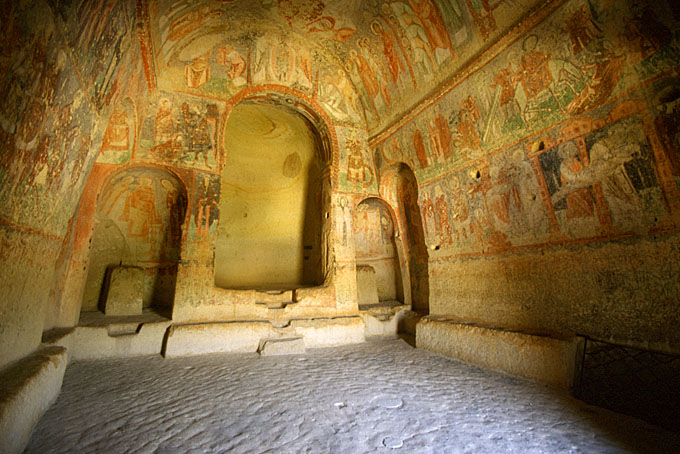 Frescoes on the interior walls of Cavus'In Kilise. | 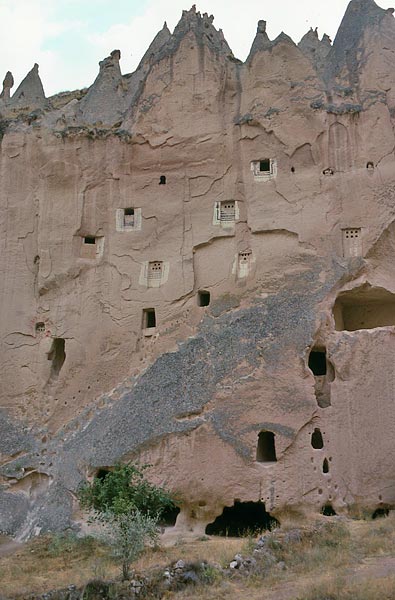 Windows of rooms in a monastery in Goreme. | 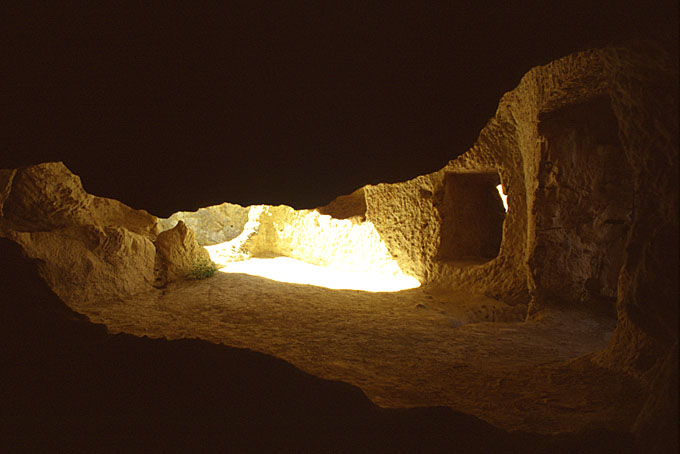 Light and shadow in monastery rooms. |
|